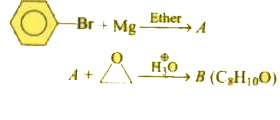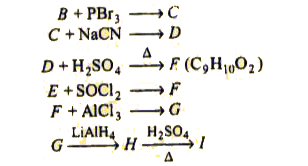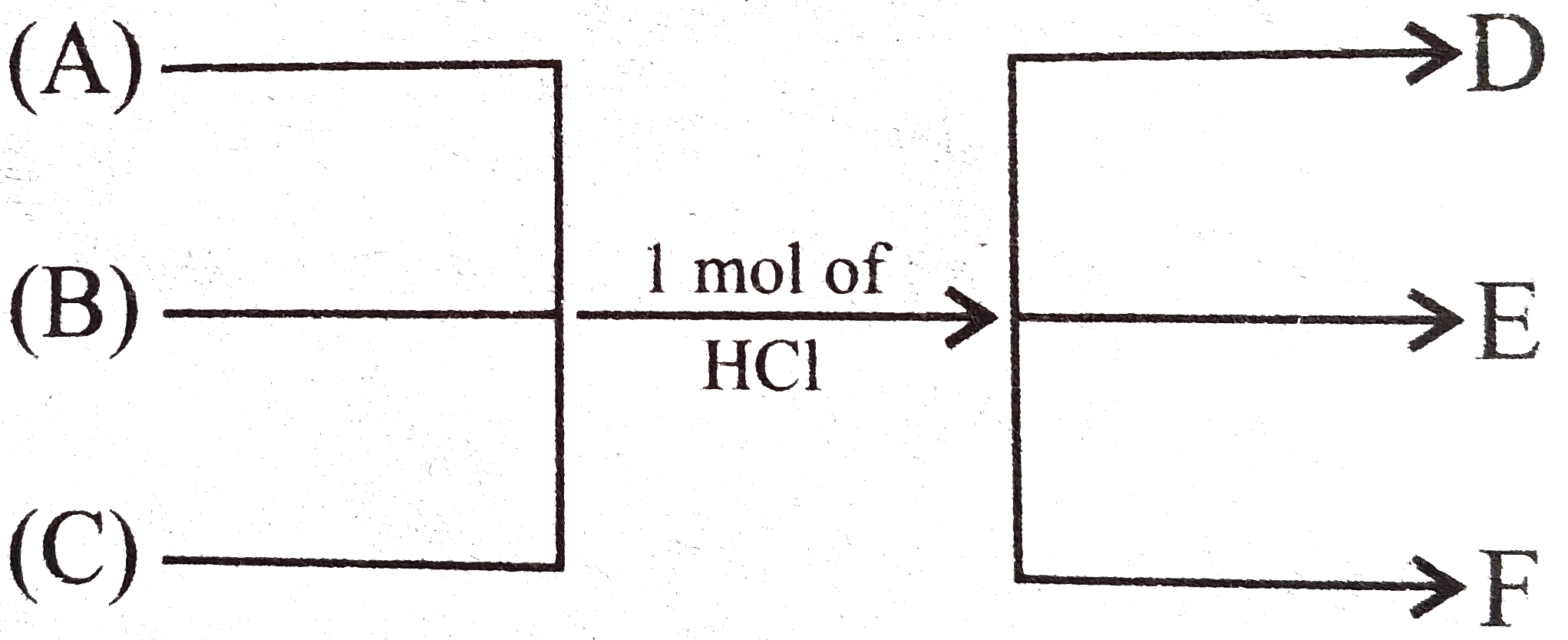
The compound (F) is:
a.Benzene
b.Phenol
c.
d.
The correct Answer is:A
Topper's Solved these Questions
- REDUCTION AND OXIDATION REACTION OF ORGANIC COMPOUNDSBOOK - CENGAGE CHEMISTRY ENGLISHCHAPTER - REDUCTION AND OXIDATION REACTION OF ORGANIC COMPOUNDSEXERCISE - Exercise (Multiple Correct)
35 Videos
- REDUCTION AND OXIDATION REACTION OF ORGANIC COMPOUNDSBOOK - CENGAGE CHEMISTRY ENGLISHCHAPTER - REDUCTION AND OXIDATION REACTION OF ORGANIC COMPOUNDSEXERCISE - Exercise (Single Correct)
90 Videos
- REDUCTION AND OXIDATION REACTION OF ORGANIC COMPOUNDSBOOK - CENGAGE CHEMISTRY ENGLISHCHAPTER - REDUCTION AND OXIDATION REACTION OF ORGANIC COMPOUNDSEXERCISE - EXERCISES
1 Videos
- QUALITATIVE INORGANIC SALT ANALYSISBOOK - CENGAGE CHEMISTRY ENGLISHCHAPTER - QUALITATIVE INORGANIC SALT ANALYSISEXERCISE - Viva Voce Questions And Part-C (Analysis Of Cations)
42 Videos
- SOLID STATEBOOK - CENGAGE CHEMISTRY ENGLISHCHAPTER - SOLID STATEEXERCISE - Ex 1.2 (Objective)
9 Videos
Similar Questions
An acidic compound (A)(C4H8O3) loses its optical activity on strong heating yielding (B)(C4H6O2) which reacts readly with KMnO4. (B) forms a dervative (C) with SOCl2 which on reaction with (CH3)2NH gives (D). The compound (A) on oxidation with dilute chromic acid gives an unstable compound (E) which decarboxylates readily to give (F)(C3H6O). The compound (F) gives a hydrocarbon (G) on treatment with amalgamated Zn and HCl. Give the structures of (A) to (G) with proper reasoning.
View SolutionIn the reaction , C6H5NH2NaNO2/HBF4−−−−−−−−−→273 K(A)Δ−−→C6H5F. The compound (A) is known as :
View Solution
Knowledge Check


The compound (F) must be :A B
B C
C D
D

Oxidation state of Fe in compound (F) is
View Solutioni. (A), a compound with lowest number of C atoms, is unsaturated hydrocarbon and is optically active.
ii. (B), a compound with lowest number of C atoms, is unsaturated hydrocarbon and shows diastereomerism.
iii. (C), a compound with lowest number of C atoms and unsaturated hydrocarbon, shows both optical and geometrical isomerism.
Following is the reaction sequence of A, B, and C.

The structure of compound (F) is:
View Solution
The compounds (F) and (G), repectively, are:
View SolutionParagraph for problems 9−15

Compound (F) is:
View SolutionAn organic compound (A) on heatig produces two gases (B) and (C) and neutral oxide (D) which turns cobalt chloride paperr pink. Gas (B) turns lime water milky and produces an acidic solution with water. Gas (C) produces a poisonous gas (E) with chlorine gas, the gas, this gas with ammonia gives an organic compound (F) which on further reaction with (D) gives NH3 gas. Then, compound (A) and (F) can be found as:
View SolutionA compound (A) is used in paints instead of salts of lead.Compound(A) is obtained when a white compound (B) is strongly heated . Compound (B) is insoluble in water but dissolves in sodium hydroxide forming a solution of compound (C) the compounds (A) on heating with coke gives a metal (D) and a gas (E) which burns with blue flame . (B) also dissolves in ammonium sulphate solution mixed with ammonium hydroxide. solution of compound (A) in dilute HCl gives a bluish white//white precipitate (F) with excess of (F) with excees of K4[Fe(CN)6] identify (A) to (F) and explain the reactions.
View SolutionCl2+F2(Excess)573K−−→(A)
Shape of compound (A) is
View Solution

